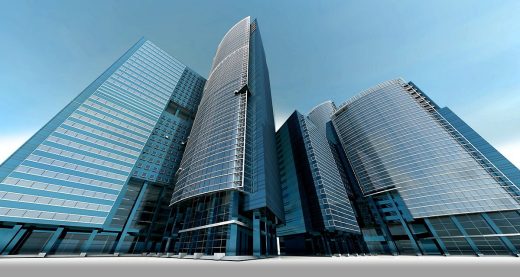Why B2B brands invest in 3D product configurators, Architectural rendering software, Three dimensional render
Why B2B Brands Are Investing in 3D Product Configurators
29 April 2025
Introduction
The demand for 3D technology-based products has skyrocketed, with a market share of USD 310.5 billion in 2024. 3D product configurators are leading this transformation in B2B brands, allowing for personalizing and interacting with 3D views of designs in real time. This is effective in bringing an interactive shopping experience and further driving sales.
In this blog, we’ll define a 3D product configurator, explore its key features, and highlight the specific advantages it might offer B2B businesses. We will also look at industries that are already seeing the most remarkable results from adopting this innovative technology.
Right now, keep scrolling to discover more with us!
What is a 3D product configurator?
First, what is a configurator?
At its core, a configurator is software designed to support the design and customization of products to satisfy customer preferences. It enables users to make real-time design adjustments on color, materials, and more, displayed in static images, 2D, or 3D visuals. This helps both sellers and customers have an overall view of the final product designs.
3D product configurators have performed better than traditional configurators thanks to offering a more dynamic, immersive experience. Customers can interact with designs in 3D views, making it perfect to discover every product angle for deeper understanding. B2B brands that sell complex, highly modular products should use this 3D technology to ensure more clarity, confidence, and control during the buyer decision-making process.
How 3D configurators help B2B businesses
Enhance customer experiences with interactive visuals
When shopping online, customers need to understand precisely what they’re purchasing to ensure the best fit when receiving orders. 3D product configurators allow customers to build, design, customize, and visualize every real-time product design from 360 degrees. This level of detail increases customer trust instead of only working with static visuals, which is critical in industries like manufacturing or interior design—specifications matter.
Also, many 3D configurators integrate Augmented Reality (AR) technology, offering photorealistic visuals and bringing products to life right in the customer’s environment. This contributes to strengthening emotional engagement during their shopping journey.
Allow for quick and easy use
Most modern 3D product configurators are designed to be intuitive and user-friendly. They require no technical expertise: Only select features and wait for them to showcase. Thus, customers can configure their product without the support of the sales team.
Reduce sales cycle and human errors
Traditional B2B sales processes demand back-and-forth conversations between sellers and customers to clarify specifications, customize offers, and finalize quotes. This can be time-consuming and labor-intensive, often leading to delays and missed opportunities.
With 3D configurators, customers can independently explore their customization options, instantly view changes, and receive real-time pricing and quotes. This not only shortens the sales cycle but also reduces mistakes from manual phases or miscommunication. Consequently, you can increase buyer satisfaction and free up efforts for other activities.
Increase orders and revenues
By streamlining the sales process and providing an immersive experience, 3D product configurators can help achieve higher conversions for more orders, sales, and revenues. Customers feel more confident with their selections, enabling them to close deals faster. Moreover, valuable data on customer preferences can help refine marketing strategies.
What B2B brands look for in a 3D configurator
This section will explore the 4 key features to consider for your 3D configurator:
- Real-time 3D visualization
One of the most important functionalities of 3D product configurators is delivering high-quality, real-time 3D visualizations. Users expect interactive, lag-free interactions as they configure their products to evaluate all of the final designs clearly and precisely. This is more meaningful for bespoke items that often come up with lots of combinations.
- Visual Configure, Price, Quote
This feature allows everyone to configure products and generate quotes simultaneously. You can see real-time customization, prices, and quoting, ensuring a high accuracy level. As a result, you can streamline decision-making, minimize delays, and boost conversions.
- Augmented Reality (AR)
AR takes 3D product configurator performance to the next level. Customers can visualize products in their real-world environment to see how perfectly the product designs fit. This is essential in reducing returns because they know exactly what they are getting.
- Seamless integration with existing systems
An innovative and engaging work environment tech tip today is to utilize collaboration tools to ensure seamless communication across business operations. That’s also when B2B businesses should consider implementing 3D configurators on their product pages.
These configurators are designed to work well with eCommerce platforms like Shopify or WooCommerce, as well as other built-in systems (e.g., CRMs and ERPs). This helps you ensure a smoother workflow and saves human effort in controlling everything separately.
Moreover, mobile responsiveness, 3D room planning, and rule-based configuration can make your 3D product configurators stand out. However, depending on your products and demands, consider and adapt these features flexibly to achieve the best results.
Top 3 industries revolutionized by 3D product configurators
#1. Furniture & interior design
These B2B brands use 3D configurators to immersively showcase customizable and highly modular products, from office furniture to residential decor. Everyone can experiment with fabrics, dimensions, and layouts and then see their vision come to life in real-time. This interactivity enhances customer purchasing confidence and drives sales.
#2. Construction and Real Estate
3D and AR technology are transforming modern property management a lot. That’s why 3D product configurators are a go-to choice for construction and real estate businesses. They allow architects and property managers to customize building designs realistically. Additionally, a 3D room planner aids the true-to-life experience in discovering designs.
#3. Automotive
The automotive industry leverages 3D configurators to offer feasible bespoke vehicles. Everyone can modify every aspect, from engine types to exterior colors, and view their selections in 3D views. These configurators are also built on rule-based logic, helping ensure high combination accuracy and enabling the final designs to be manufacturable.
Conclusion
3D product configurators are becoming indispensable in B2B models, especially those sell complex, tailor-to-order, or highly-modular products. Everyone can directly design and interact with product designs in 3D views for a clear and immersive experience. This encourages customer satisfaction, which leads to higher conversion rates and revenues.
Remember to look for proper features for your 3D configurators to fully unlock this technology’s power. It’s also recommended that you contact experts for helpful advice.
Comments on this guide to Why B2B brands invest in 3D product configurators article are welcome..
3D Rendering Design – Building Renders
CGI and 3D Posts
The impact of 3D architectural rendering in modern architecture
Architectural and Interior Design 3D Visualization Benefits
Essential factors in 3D printing guide
Architectural Designs
London Architecture Designs – chronological list
London Architect – design practice listing on e-architect
Comments / photos for the Why B2B brands invest in 3D product configurators page welcome







